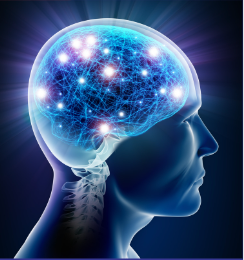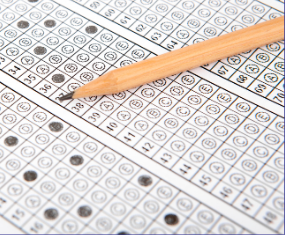Learning: a process of acquiring new understanding, knowledge, behaviors, skills, values, attitudes, and preferences. Learning is a natural part of human maturation, occurring regularly and consistently even without being consciously aware. Learning is not easily measured (despite the obsession in society to do so). There are an astounding number of researched-based frameworks, strategies, and interventions developed over the decades to support practices that lead to learning.
Why so many? Learning is COMPLEX!
There is an overwhelming body of research around learning and the brain. Our brains change when we are learning, building new neurons to connect to information we already know (neuroplasticity). When these neural pathways are solidified, we can recall and transfer this new knowledge. Because our brains are social organs (we require both stimulation and connections for our brains to continue to grow), learning also requires positive social experiences as well as adequate time to result in long-term transfer.
Emerging research [1] on learning and the brain reveal that these neural pathways give us the ability to understand complex subject matter and transfer what we have learned to new problems and settings well into adulthood (malleable). Additionally, research has confirmed there is no single way a brain will perceive or engage with learning- referred to as neuro-variability. This is critical for schools as it suggests the need to design for flexible pathways towards learning goals acknowledging the variability in each learner’s strengths and connections that exist from exposure to their environment. [2]
1.Goodwin, B. (2018) Student learning that works: How brain science informs a student learning model. Denver, CO: McREL International. 2. https://udlguidelines.cast.org/
Teaching: is the act of imparting understanding and skills with the purpose of leading to learning. “Teaching is the process of attending to people’s needs, experiences and feelings, and intervening so that they learn particular things, and go beyond the given.” (infed.org) Teachers know and understand the value of building strong relationships with their students and providing them with positive learning experiences. Teachers will quickly rattle off techniques and strategies in their “tool box” to support learning that match what research backs up.
So, if brain science, learning research, and teachers all point to the most effective strategies for supporting learning in the human brain… why is it still such a debated topic in schools?
Learning standards drive school curriculum. These nationally determined standards are based on expectations of average chronological age development, rather than current brain development research and personalized readiness. We know a lot about child development, yet we don’t actually focus on this knowledge in teaching and learning because it doesn’t “fit” with the restrictions/expectations set in place by federal and state policies. Instead, we are chasing standardized academic benchmarks regardless of students’ brain or social emotional readiness.
The concern about rigorous academics and the way those concerns have been addressed have created a highly stressful learning and teaching environment for every stakeholder in the system. To get a handle on the roots of the issue, let’s dive into how learning is measured in schools. Benchmarking in education is the current way for schools to know if students have “learned” specific skills in a given standard and by an expected time period. The practice of benchmarking is helpful in identifying learning needs of students, when students transfer schools and require placement, and setting best-practice for achievement between educational institutions.
 Teachers are acutely aware of the accountability expectations: students achieving at grade level or above on standardized testing and moving through curriculum scope and sequence guides at the expected pace. A big limitation is the assumption that learning can be that precise and controlled based on date and time constrictions.
Teachers are acutely aware of the accountability expectations: students achieving at grade level or above on standardized testing and moving through curriculum scope and sequence guides at the expected pace. A big limitation is the assumption that learning can be that precise and controlled based on date and time constrictions.
The strong emphasis on setting high learning standards by grade and course came as a result of the 1983 report A Nation At Risk. While the report professes the need to develop a “Learning Society” that extends beyond the classroom, the scathing remarks on a curriculum that was diluted by choice and mediocrity catapulted the demands for a test-based accountability system. The No Child Left Behind Act of 2001 (NCLB) followed and aimed at sweeping up the aspirations from the 1983 document: the “twin goals of equity and high-quality schooling” when data revealed inequitable student achievement.
A Nation at Risk warned that “…we cannot permit one to yield to the other either in principle or in practice. To do so would deny young people their chance to learn and live according to their aspirations and abilities. It also would lead to a generalized accommodation to mediocrity in our society on the one hand or the creation of an undemocratic elitism on the other” seems to have come to fruition. NCLB was built on four pillars: (1) accountability for results; (2) an emphasis on doing what works based on scientific research; (3) expanded parental options; and (4) expanded local control and flexibility. While each pillar sounds good in theory, in practice they have been carried out in ineffective ways resulting in potentially damaging consequences. A Nation At Risk and NCLB have cemented the high-stakes testing and public benchmarking of schools, districts, and universities for the last three decades. While these documents are both well-intended, they have contributed to the educational and social emotional crises we see in schools today. We have lost sight of the real purpose of learning, and we are now in an endless cycle of shame and blame.
In addition to all of these concerns, states are mandating an enormous amount of additional units of study beyond the required academic units to address societal issues that have been identified as needing urgent attention. For example, in 2022 Illinois added mandated instruction in “Contributions made to society by Americans of different faith practices (including, but not limited to, those specifically enumerated in statute)”, “All students in grade 7 and all high school students enrolled in a course concerning U.S. history or a combination of U.S. history and American government must view a Congressional Medal of Honor film made by the Congressional Medal of Honor Foundation”, abduction education, traffic injury prevention, teen and dating violence, to name a few .
Let’s take a deeper look at just one of these social issues thrust upon public schools to teach: suicide prevention. While the mandated suicide prevention lessons have literally saved lives, the Every Student Succeeds Act suggests only a 800:1 student to school social worker ratio in schools. The School Social Work Association of America recommends a 400:1 ratio. The actual ratios vary greatly between states, and even within school districts in states, all pending (inequitable) funding availability. Teachers are not trained to support students with this level of emotional support needs, nor do they have time during the day with the multitude of other teaching responsibilities. Most stakeholders would agree this is a critical issue. Our point in this example spotlights the expansive breadth of topics schools are mandated to “cover” without consideration of implementation impact. It is this type of mandate, implemented without adequate supports, that adds to the overwhelming emotional stress teachers are feeling and is one of the many aspects leading to teacher resignations.
Since the pandemic, schools have noticed a very large increase in students’ social and emotional needs. Students have grown much more passive in their approach to teacher-directed learning. Students, when provided a voice, need to feel that what they are learning has has personal meaning and authenticity in their lives. When this happens, students are more actively engaged, are more vocal, and participate in higher level discourse (UDL And The Learning Brain).
“What gets measured gets taught”

A sign that can be found on many street corners.
Because of these accountability measures, educators are torn between teaching what students need in the way they know is best, and teaching the mandated content that will be tested, because that test determines whether a school is successful or not. Educators, schools, and districts are lambasted when the correct percentage of students aren’t “meeting or exceeding state standards” for their grade level. That shame and blame trickles down to the students who in turn often believe they “aren’t smart”, or “aren’t good at school.” This affects their confidence and can lead to social, emotional issues in the short and long term. We have turned into a society obsessed with testing scores.
What is measurable and is measured now is not what is most important in learning and teaching today. There is currently no widely accepted, sanctioned process to accurately measure the complexity of learning. The use of a single standardized assessment that gathers summative evidence of prescriptive content information is only one way to analyze learning. The Nation At Risk report captured real concerns around students not being “pushed to work to the limits of their capabilities” and that schools should have “genuinely high standards rather than minimum ones”. These concerns are still a critical focus of our educational institutions. Yet we continue to design for the mass-production of “widgets” rather than providing ALL students with authentic learning experiences.
 If public education’s purpose is to prepare students for a life that allows for opportunities to work, sustain families and communities, and achieve the “American Dream”, then the focus of our teaching and learning must reflect those required skills.
If public education’s purpose is to prepare students for a life that allows for opportunities to work, sustain families and communities, and achieve the “American Dream”, then the focus of our teaching and learning must reflect those required skills.
You don’t have to search extensively to run across research, documentaries, or position papers on the desired skills for our future generations. These studies and projections identify the importance of flexible thinking, advanced problem-solving, and social emotional intelligence equal to, if not more important, as foundational content knowledge. This holistic approach to essential classroom and workplace skills must be what is the focus, and more importantly, what is measured.
We encourage you to…
- Look at the measures being highlighted in our publicly funded system. (Review the English questions on an ACT/ SAT test as a great place to start!) Advocate for what you really want learning to be focused on in schools. Consider ways to celebrate various learning successes beyond what standardized testing covers.
- Ask the tough questions: Are our schools really preparing students for the future of work and life? Move beyond being ok if it is not ok.
- Talk to students and find out what they really want. (They are the end consumer.) How can we connect with what they want to the things we know they need?
The real question: How can we truly meet the aspiration of equity and high quality schooling while allowing each young person to live and learn according to their aspirations and abilities?

